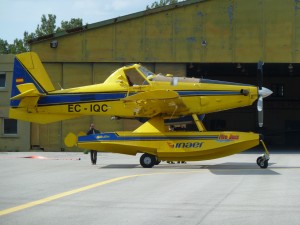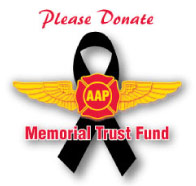As an exhibitor and presenter at the recent Aerial Firefighting Conference held in France it was interesting to observe where aerial firefighting has gone in Europe and the Mediterranean region over the last couple of years since I was in Spain in 2010.
I appears there are many more players in the aerial firefighting scene with countries from Balkans, Israel and the former Soviet block commencing aerial operations. Countries like Macedonia and the Ukraine realize the importance of these operations for fire control however it is apparent there are some practices that make them less efficient as they could be. Things like the lack of chemical use in some jurisdictions to save money or the use of aircraft only when a fire is large enough to warrant their use are typical of the things observed. The saving of money by not using water additives is a little bizarre as the flying costs are far and away the larger expense incurred over fires, and the reduction of flying times by being more efficient seems to be over looked.
Within the countries with a well developed aerial firefighting program it is great to see command and control concepts and the development of better aerial coordination as the key to operational effectiveness. The Spanish Air Force Group 43 and their fleet of Canadairs CL415 was a case where there has been real advances in background systems of control. The local fire services in the Provence area had developed some great ideas to support ground crews with hose lays over difficult terrain with use of helicopters, and a new inflatable tank system to be fitted inside the Eurocopter EC225 witha capacity of over 1000 gallons were a couple of highlights.
Of great intrigue were the Unmanned Aerial Systems such as Nitrofirex. These 600 gallon UAV gliders launched out of the back of C17 freighters at night with a jet motor to get them back to a base was an idea that was somewhat challenging! Apparently they are dumped out of the aircraft in a swarm and then bomb the fire simultaneously. Good luck with that concept for sure! The French had smaller observation UAVs but there was also the concept of an amphibious UAV that could self fill and return to the fire. The issue of safety of pilots and safer operations was a key theme for these concepts. Have a look at the the Nitrofirex website to get your head around this. http://www.nitrofirex.com/en
It was very apparent that the Mt Carmel fire in Israel had a profound affect on their community. The detail and effort to protect their community from a similar disaster was evident with them committing over 300 million Euros over the next 5 years in protecting their communities from wildfires despite it being such a small area.
From a BlazeTamer380 point of view our reception was warm and friendly with even an opportunity to conduct drops in a a FireB oss and an AT802 in the field. Unfortunately the aerial display was called off due to a number of factors beyond the organizer’s control which really put a dampener on the conference’s last day. It was great however to network with like minded passionate people excited about the future of aerial firefighting globally. The next challenge is turn such a conference into a professional development program to share and develop knowledge and experience rather each agency telling what they do and their country’s despcription.













Speak Your Mind
You must be logged in to post a comment.